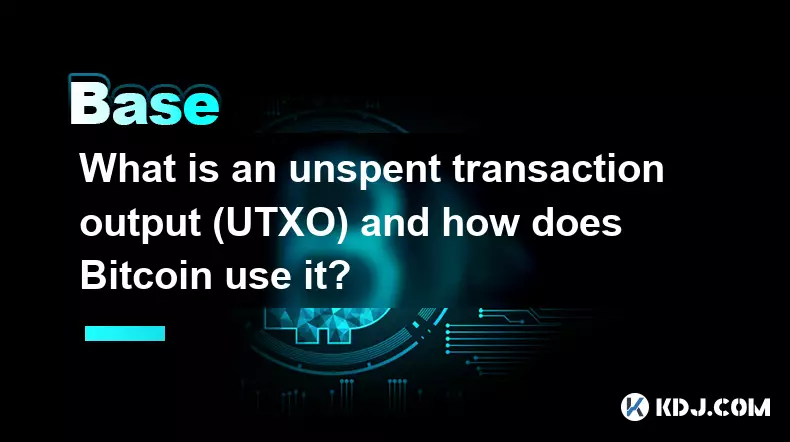-
 bitcoin
bitcoin $103128.103252 USD
-3.33% -
 ethereum
ethereum $3437.127692 USD
-4.86% -
 tether
tether $0.999700 USD
-0.02% -
 xrp
xrp $2.403993 USD
-5.73% -
 bnb
bnb $961.374676 USD
-4.11% -
 solana
solana $154.938665 USD
-8.18% -
 usd-coin
usd-coin $1.000113 USD
0.03% -
 tron
tron $0.298122 USD
0.30% -
 dogecoin
dogecoin $0.172428 USD
-5.76% -
 cardano
cardano $0.557625 USD
-7.13% -
 hyperliquid
hyperliquid $38.740701 USD
-6.51% -
 chainlink
chainlink $15.306051 USD
-7.51% -
 bitcoin-cash
bitcoin-cash $507.558648 USD
-3.26% -
 stellar
stellar $0.281899 USD
-6.74% -
 unus-sed-leo
unus-sed-leo $9.241811 USD
0.57%
What is a "sandwich attack" and how does it affect DeFi traders?
A sandwich attack exploits blockchain transparency by front- and back-running a victim's trade, profiting from price slippage in AMM pools.
Nov 08, 2025 at 03:00 pm

Understanding the Mechanics of a Sandwich Attack
1. A sandwich attack occurs when a malicious actor places trades both before and after a victim's transaction in a decentralized exchange. This manipulation takes advantage of the public nature of blockchain transactions and the transparency of mempools.
2. The attacker monitors pending transactions for large buy or sell orders on automated market maker (AMM) platforms like Uniswap or SushiSwap. When they detect a sizable trade, they execute a buy order just before it to inflate the price.
3. Once the victim’s transaction executes at the inflated price, the attacker immediately sells their position right after, profiting from the temporary price spike caused by the combined volume.
4. This sequence effectively 'sandwiches' the target trade between two legs of the attacker’s strategy, extracting value through front-running and back-running techniques.
5. The entire process relies on precise timing and gas fee manipulation to ensure transaction ordering, often using bots that interact directly with Ethereum’s execution layer.
How Liquidity and Slippage Enable Exploitation
1. In AMMs, asset prices are determined algorithmically based on reserve ratios within liquidity pools. Large trades inherently cause slippage due to these mathematical formulas.
2. Attackers exploit this predictable price impact by amplifying it temporarily through their own trades. By increasing demand moments before a large swap, they push the price higher than it would have been otherwise.
3. Victims end up paying more for tokens than expected, while the attacker captures the difference as profit when selling post-transaction.
4. Pools with lower liquidity are especially vulnerable because even moderately sized trades can significantly shift prices, making them prime targets for sandwich attacks.
5. High slippage tolerance settings in user interfaces further enable such exploits, as traders unknowingly allow larger deviations in execution price.
Risks Faced by DeFi Users in Open Trading Environments
1. Retail traders are disproportionately affected due to limited access to advanced tools that could mitigate these risks. They often lack real-time monitoring capabilities and rely on default wallet configurations.
2. Transactions broadcasted over standard peer-to-peer networks remain visible in mempools for several seconds, giving attackers ample time to analyze and react.
3. Use of centralized relays or unprotected RPC endpoints increases exposure, as third parties may extract data or prioritize certain transactions for profit.
4. Smart contract interactions that involve token swaps, limit orders, or yield farming withdrawals become potential entry points for exploitation if not secured properly.
5. Even experienced users face challenges in avoiding these attacks without resorting to private transaction methods or specialized routing protocols.
Frequently Asked Questions
What makes a transaction susceptible to being sandwiched?A transaction becomes vulnerable when it involves a significant swap on a decentralized exchange and is visible in the mempool. Low liquidity pairs and high slippage settings increase susceptibility.
Can sandwich attacks occur on all blockchains?Yes, any blockchain supporting permissionless transactions and transparent mempools—such as Ethereum, Binance Smart Chain, or Polygon—is susceptible to sandwich attacks, especially where MEV (miner extractable value) bots operate.
Are there tools available to protect against sandwich attacks?Some wallets and trading platforms offer private transaction routing, flashbots integration, or MEV protection layers that shield trades from public mempools, reducing the risk of front-running.
Do decentralized exchanges take responsibility for losses from sandwich attacks?No, most DeFi platforms disclaim liability for financial loss due to market manipulation. Responsibility lies with the user to understand transaction risks and employ protective measures.
Disclaimer:info@kdj.com
The information provided is not trading advice. kdj.com does not assume any responsibility for any investments made based on the information provided in this article. Cryptocurrencies are highly volatile and it is highly recommended that you invest with caution after thorough research!
If you believe that the content used on this website infringes your copyright, please contact us immediately (info@kdj.com) and we will delete it promptly.
- Chinese DEX Sun Wukong: Surging Volumes and Stablecoin Reserves
- 2025-11-12 20:50:00
- AI Phishing, Web3 Security, and Crypto Exploits: Staying Safe in the Wild West of Web3
- 2025-11-12 21:10:01
- Bitcoin Transfer Fees: A $105,000 Oops and the Future of Payments
- 2025-11-12 20:55:01
- Atom Valley Project's Big Day: A New Decade of Growth for Greater Manchester
- 2025-11-12 21:00:02
- Coin Trick Christmas Cash: Making Holiday Magic (and Money!)
- 2025-11-12 21:10:01
- Coinbase, BVNK, and Stablecoins: A Deal That Wasn't and the Evolving Landscape
- 2025-11-12 20:40:00
Related knowledge

What is the difference between a transparent and a shielded transaction?
Nov 10,2025 at 05:59pm
Understanding Transparent Transactions in Cryptocurrency1. Transparent transactions are the standard form of transaction on most public blockchains li...

What is a "crypto airdrop farmer" and what strategies do they use?
Nov 09,2025 at 03:39pm
What Is a Crypto Airdrop Farmer?1. A crypto airdrop farmer is an individual who actively participates in blockchain projects to qualify for free token...

What is an unspent transaction output (UTXO) and how does Bitcoin use it?
Nov 12,2025 at 01:40am
Understanding the Concept of Unspent Transaction Output (UTXO)1. An Unspent Transaction Output, commonly referred to as UTXO, is a fundamental compone...

How do you track a crypto portfolio across multiple wallets and chains?
Nov 12,2025 at 04:19pm
The Evolution of Decentralized Exchanges in the Crypto Ecosystem1. Decentralized exchanges (DEXs) have transformed how users trade digital assets by r...

How does a crypto insurance protocol work?
Nov 08,2025 at 12:39am
Understanding Crypto Insurance Protocols1. A crypto insurance protocol operates by offering financial protection against losses incurred from digital ...

What is token composability and why is it called "DeFi Legos"?
Nov 09,2025 at 06:39am
Bitcoin's Role in Decentralized Finance1. Bitcoin remains the cornerstone of decentralized finance, serving as a benchmark for value and trustlessness...

What is the difference between a transparent and a shielded transaction?
Nov 10,2025 at 05:59pm
Understanding Transparent Transactions in Cryptocurrency1. Transparent transactions are the standard form of transaction on most public blockchains li...

What is a "crypto airdrop farmer" and what strategies do they use?
Nov 09,2025 at 03:39pm
What Is a Crypto Airdrop Farmer?1. A crypto airdrop farmer is an individual who actively participates in blockchain projects to qualify for free token...

What is an unspent transaction output (UTXO) and how does Bitcoin use it?
Nov 12,2025 at 01:40am
Understanding the Concept of Unspent Transaction Output (UTXO)1. An Unspent Transaction Output, commonly referred to as UTXO, is a fundamental compone...

How do you track a crypto portfolio across multiple wallets and chains?
Nov 12,2025 at 04:19pm
The Evolution of Decentralized Exchanges in the Crypto Ecosystem1. Decentralized exchanges (DEXs) have transformed how users trade digital assets by r...

How does a crypto insurance protocol work?
Nov 08,2025 at 12:39am
Understanding Crypto Insurance Protocols1. A crypto insurance protocol operates by offering financial protection against losses incurred from digital ...

What is token composability and why is it called "DeFi Legos"?
Nov 09,2025 at 06:39am
Bitcoin's Role in Decentralized Finance1. Bitcoin remains the cornerstone of decentralized finance, serving as a benchmark for value and trustlessness...
See all articles










































































